Physical Address
304 North Cardinal St.
Dorchester Center, MA 02124
Physical Address
304 North Cardinal St.
Dorchester Center, MA 02124

Pristine beaches await, but which Thai island matches your vacation dreams: bustling Koh Samui or diving paradise Koh Tao?
Choosing between Koh Samui and Koh Tao depends on your vacation style. Opt for Samui if you crave luxury resorts, diverse beaches, and vibrant nightlife across a larger island. Pick Tao for world-class diving, budget-friendly stays, and an intimate community vibe in a compact setting. Both offer authentic Thai experiences, though Samui runs 20-40% pricier. Consider January-February for ideal weather, avoiding the September-November monsoon. Your perfect Thai island adventure awaits in the details below.
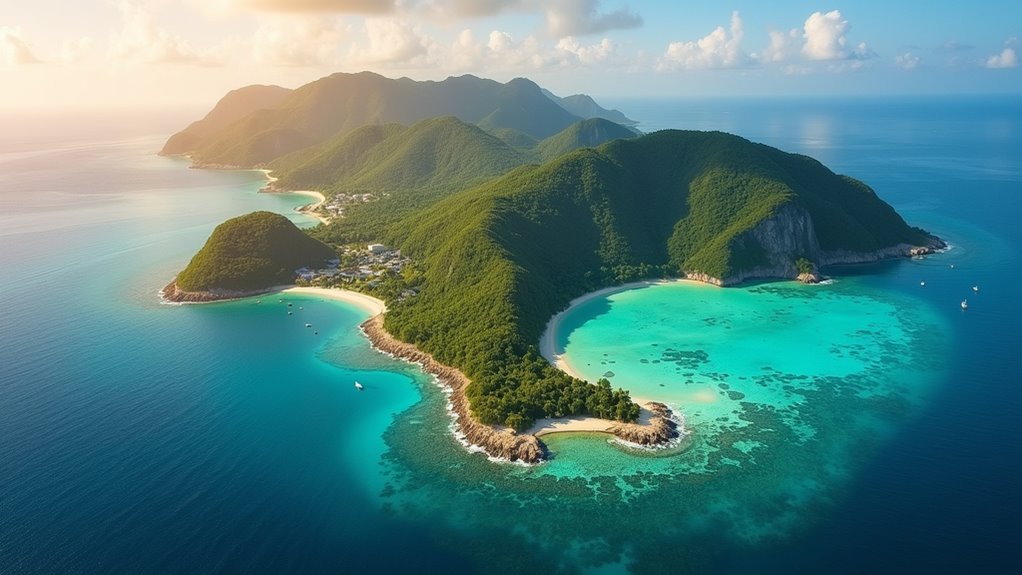
When deciding between these two Thai gems, size plays a pivotal role in your island experience. Koh Samui sprawls across 228.7 square kilometers, offering diverse landscapes and varied topography that support multiple ecosystems. As Thailand’s second largest island after Phuket, Koh Samui provides significantly more space for exploration and accommodation options. You’ll find everything from bustling beaches to hidden natural retreats within its borders.
In contrast, Koh Tao occupies just 21 square kilometers, creating a more intimate setting with its compact, rocky coastlines. This smaller footprint means you’re never far from anything on the island—perfect if you’re looking to maximize your time exploring marine environments rather than traveling between destinations.
Both islands sit off Thailand’s east coast, but Koh Tao’s smaller size makes it easier to navigate on a budget while still experiencing authentic Thai island culture.
Traveling between Koh Samui and Koh Tao is surprisingly straightforward, thanks to well-established ferry routes that connect these island gems. The journey typically takes about 1.5 hours on high-speed ferries, with tickets ranging from ฿550-800 depending on season and operator. Expect a total travel time of 2 to 2.5 hours when including disembarkation procedures.
Island-hopping in Thailand couldn’t be easier, with fast ferries whisking travelers between paradise spots in just 90 minutes.
For the smoothest island-hopping experience:
Morning departures (starting around 8:00) give you more flexibility with your day.
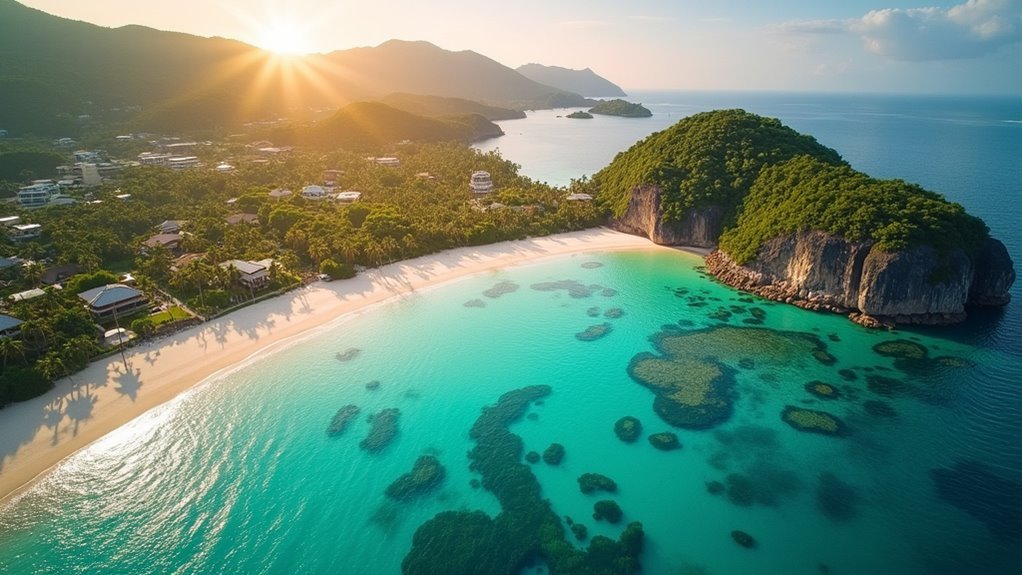
Once your ferry docks at either island, the stunning beaches of Koh Samui and Koh Tao await your exploration.
Samui offers expansive stretches like 7km-long Chaweng Beach, lined with beachfront restaurants and water sports options. It’s ideal if you’re traveling with family or seeking vibrant nightlife.
Koh Tao presents a more intimate experience with cove-like beaches such as Sairee (1.7km) and Freedom Beach. You’ll find fewer crowds, exceptional snorkeling right offshore, and a laid-back atmosphere perfect for budget travelers. The island’s focus on marine conservation projects creates opportunities for eco-conscious visitors to participate in reef protection activities.
Your beach preference might determine your choice: Samui’s developed shores provide convenience and activities, while Tao’s rustic bays offer tranquility and marine adventures. Both feature clear waters, but Tao’s exceptional visibility makes it a snorkeler’s paradise without the Samui crowds.
Choosing the right accommodation can make or break your Thai island experience, with Koh Samui and Koh Tao offering distinctly different options across the price spectrum. Koh Samui dominates the luxury market with five-star resorts and private villas, while Koh Tao excels in budget-friendly stays near diving spots. Koh Tao’s popularity among divers means most accommodations are strategically located near coral reefs and marine life exploration points.
The perfect island stay depends on your budget—Samui for luxury indulgence, Tao for wallet-friendly diving adventures.
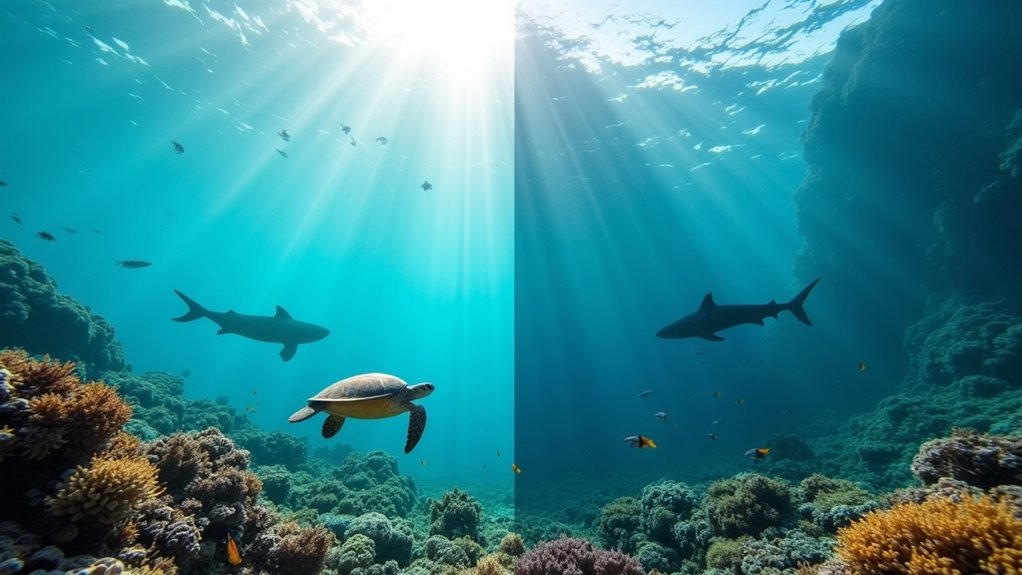
When it comes to underwater exploration, the Gulf of Thailand offers two distinctly different experiences depending on which island you choose.
Koh Tao is undeniably the diving champion, boasting numerous dive sites concentrated in close proximity. You’ll explore vibrant coral reefs teeming with turtles, moray eels, and tropical fish at spots like White Rock and Chumphon Pinnacle. The island’s affordability and abundance of dive schools make it perfect for certification courses or budget-conscious divers. Visibility has been challenging recently, with some areas experiencing poor visibility conditions of only 15-20 feet.
Meanwhile, Koh Samui offers fewer direct diving opportunities due to sandy bottoms and lower visibility. Most underwater adventures from Samui involve day trips to Koh Tao or Sail Rock—home to whale sharks and barracuda. These excursions cost more and involve longer travel times, reducing your actual dive time.
For serious divers, Koh Tao’s superior marine biodiversity and accessibility make it the clear choice.
The nightlife experiences on these two Thai islands couldn’t be more different, offering distinct atmospheres that cater to varying travel preferences. Koh Samui delivers an energetic scene with upscale venues around Chaweng Beach, while Koh Tao embraces a more relaxed vibe centered on Sairee Beach. Koh Samui’s vibrant nightlife scene includes beach parties and numerous bars, making it the more developed entertainment destination.
While Koh Samui pulses with upscale energy, Koh Tao invites travelers to unwind in its laid-back beach atmosphere.
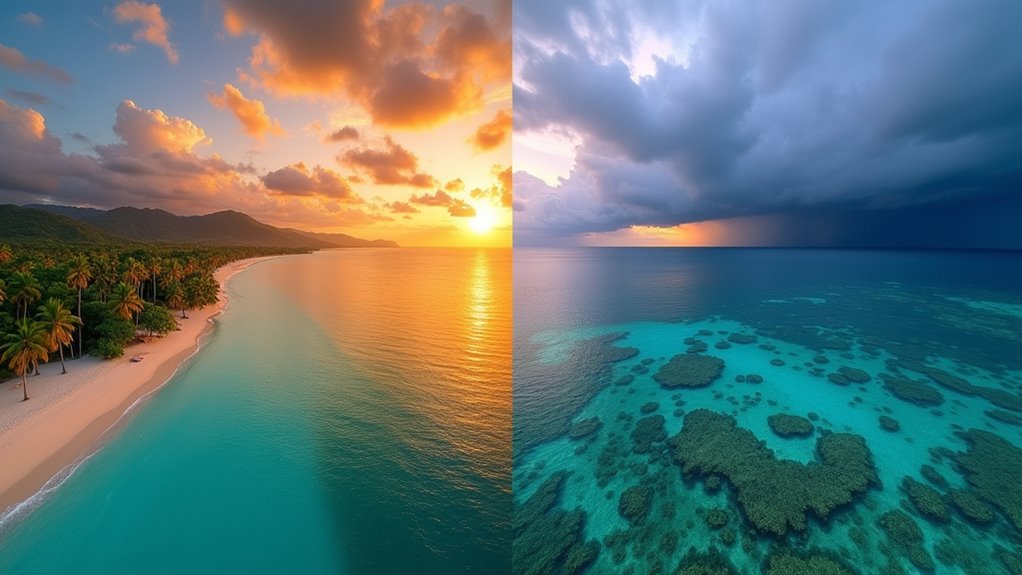
Although both islands boast tropical monsoon climates, understanding the weather patterns between Koh Samui and Koh Tao can make or break your Thai adventure. For ideal conditions, plan your trip during the dry season (December to February), when you’ll enjoy clear skies and pleasant temperatures—perfect for diving and beachcombing.
Koh Samui experiences temperatures between 25°C-32°C during this period, while Koh Tao ranges from 77°F-89°F year-round. Both islands share high humidity, but Koh Tao tends to be windier, particularly in cooler months.
Avoid September through November when monsoon rains arrive, with Koh Samui typically receiving heavier downpours than Koh Tao. June offers scattered showers in Koh Samui while maintaining relatively dry conditions compared to other rainy season months. January and February are peak tourist months, so book accommodations early and expect higher prices alongside the perfect weather.
Planning your island getaway requires more than just tracking the weather—your budget will considerably shape your Thai experience. Koh Tao consistently offers better value across most categories, running 20-40% cheaper than its larger neighbor.
Your money stretches further on these islands when you:
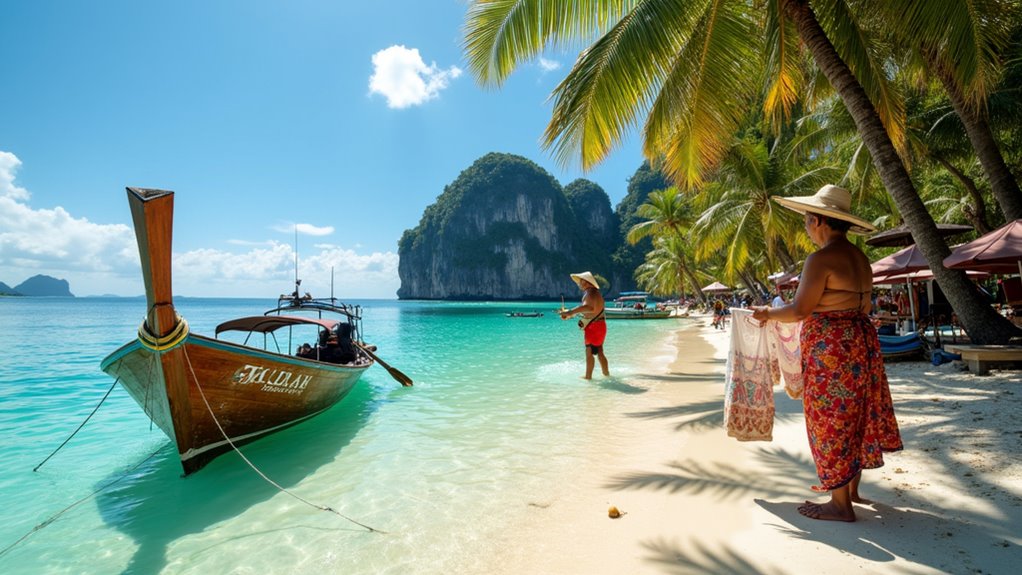
While both islands showcase authentic Thai culture, they offer distinctly different windows into local life that align with their individual characters. On Koh Samui, you’ll experience larger-scale traditional festivals like Songkran and Loi Krathong alongside sophisticated cultural activities such as Thai cooking classes at luxury resorts and visits to bustling markets.
Koh Tao delivers a more intimate culture with smaller community celebrations and eco-conscious events that reflect the island’s sustainable ethos.
Here, beachfront eateries serve authentic Thai dishes from local fishermen, while the social scene centers around relaxed beach gatherings rather than upscale venues.
Your cultural experience on Koh Samui will be more diverse and polished, while Koh Tao offers a glimpse into traditional Thai beach life with a tight-knit community feel. Visitors to Koh Samui can explore the vibrant Fisherman’s Village for a blend of traditional architecture, shopping, dining, and evening entertainment in one charming location.
Both paradises offer their own slice of Thai heaven, but your choice comes down to priorities. Koh Samui delivers accessibility and diversity—where luxury meets local life—while Koh Tao‘s intimate charm and underwater wonders speak to adventure-seekers and budget travelers alike. Whether you’re diving into crystal waters or Thai culture, remember: it’s not about finding the better island, but the island that’s better for you.